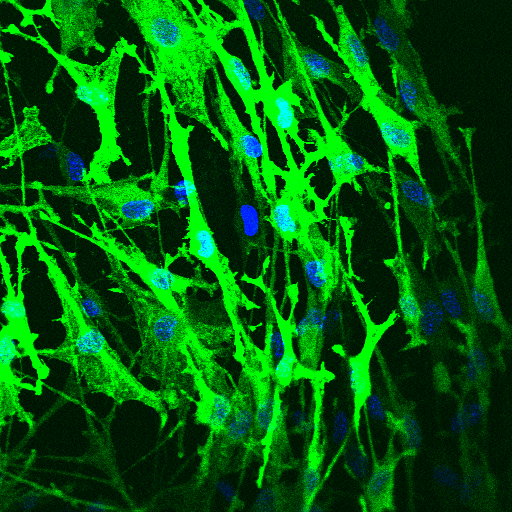Alison Xiaoqiao Xie, research assistant professor in Ken McCarthy’s lab, is first author on paper published in JCI Insight this week. Ken D. McCarthy, professor of pharmacology, is senior author and Jakovin J. Lee, is a co-author.

The dysregulation in sympathetic nervous system can lead to and exacerbate cardiovascular diseases, which affect >1 in 3 American adults and costs the US over $300 billion a year. For decades, researchers have been studying that how the sympathetic system regulate the function of its target organs, including heart, kidney and blood vessels, in order to find effective drug treatments for cardiovascular diseases.
We discovered that a forgotten group of cells located in the sympathetic ganglia, called satellite glial cells, have profound influences on sympathetic activity. The Gq-GPCR activation of these glial cells leads to robust and long-lasting sympathetic activation, likely via their interactions with neurons in the same ganglia. Satellite glial cells in the sympathetic ganglia were first described many decades ago, but no one had described their functions in the sympathetic ganglia, nor how their signaling affects nearby neuronal activity or the activity of sympathetic nervous system. Our study showed that activating the Gq-GPCR signaling in these cells increases heart rate and functions, serving as the first report on the function of these glial cells in the sympathetic ganglia. This is also significant to glial biology given that this is the first demonstration that there is active and physiologically relevant signaling between these glia and nearby neurons.

The notion that satellite glial cell signaling impacts cardiovascular functions opens an exciting door for searching new drug targets and novel treatments for cardiovascular diseases. We now know that we may be able to target glial cells instead of neurons directly. Glial cells like satellite glial cells are excellent candidate for gene therapy. Our next step is to test the therapeutic potential of targeting satellite glial cells using viruses for treating cardiovascular abnormality.
Description of image: A staining picture of the satellite glial cells (green). They express a green reporter protein in this picture and their nuclei were stained with DAPI (blue). The empty space among the net work of glial cells are actually not empty – these are the neurons which are not stained.
Full citation with link to online article: Alison Xiaoqiao Xie, Jakovin J. Lee, Ken D. McCarthy. Ganglionic GFAP+ glial Gq-GPCR signaling enhances heart functions in vivo, JCI Insight. 2017;2(2):e90565. doi:10.1172/jci.insight.90565, published January 26, 2017.
